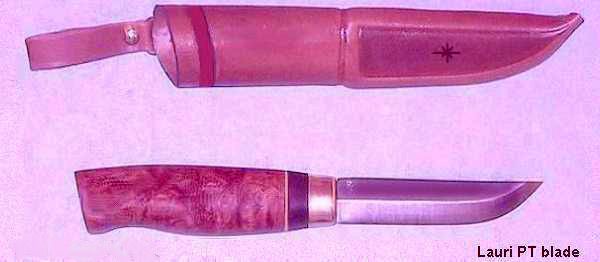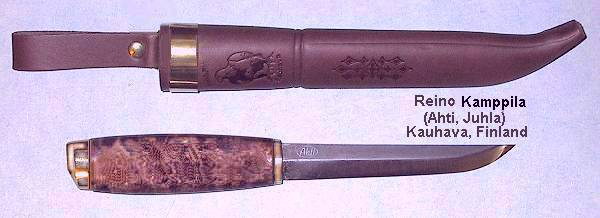Hey all.
Ever since learning about this whole category of “SCANDI” knives, I have been wanting them. Last night I happened upon a video on YouTube by a knife maker that was showing his attempt at making a SCANDI knife. His channel is ALEEKNIVES. He calls the knife he’s building a PUUKO. It has a blade of around 5 inches from 1094 stock at 3/16”. Here’s the video series. It’s 4 parts and in the end you’ll get to witness an absolute work of art. It’s a knife anyone would treasure. I sure wish it was mine.
I have a couple questions I’m hoping you all can help me with.
It seems that there are no true finger guards on SCANDI knives. The knife build on the video had a traditional guard that these types of knives have. There’s nothing that prevents your fingers from slipping off the handle and onto the blade. I guess it’s because of the ways these knives are supposed to be used.
Have you ever seen a SCANDI knife like the one in the video that did have a regular finger guard like the knives of the western world have? If you have a knife like that, I’d really like to see pics of it. Please post.
If you were making a knife in the SCANDI style with a blade of 3-6 inches, would you put a standard finger guard on it?
Do you think these types of knives, say the 4 and 5 inch blades or close, can be properly used as a hunting/field knife or are they not made for those types of chores?
Please forgive my ignorance on this type of knife and the history of them. I’m sure I don’t know the intended uses or roles the larger SCANDI knives like this one were made to fill.
I’m just trying to learn a bit more.
If there’s anything else you care to add, please feel free.
Thank you kindly for your time and any help you care to give me about these beautiful knives.
Ever since learning about this whole category of “SCANDI” knives, I have been wanting them. Last night I happened upon a video on YouTube by a knife maker that was showing his attempt at making a SCANDI knife. His channel is ALEEKNIVES. He calls the knife he’s building a PUUKO. It has a blade of around 5 inches from 1094 stock at 3/16”. Here’s the video series. It’s 4 parts and in the end you’ll get to witness an absolute work of art. It’s a knife anyone would treasure. I sure wish it was mine.
I have a couple questions I’m hoping you all can help me with.
It seems that there are no true finger guards on SCANDI knives. The knife build on the video had a traditional guard that these types of knives have. There’s nothing that prevents your fingers from slipping off the handle and onto the blade. I guess it’s because of the ways these knives are supposed to be used.
Have you ever seen a SCANDI knife like the one in the video that did have a regular finger guard like the knives of the western world have? If you have a knife like that, I’d really like to see pics of it. Please post.
If you were making a knife in the SCANDI style with a blade of 3-6 inches, would you put a standard finger guard on it?
Do you think these types of knives, say the 4 and 5 inch blades or close, can be properly used as a hunting/field knife or are they not made for those types of chores?
Please forgive my ignorance on this type of knife and the history of them. I’m sure I don’t know the intended uses or roles the larger SCANDI knives like this one were made to fill.
I’m just trying to learn a bit more.
If there’s anything else you care to add, please feel free.
Thank you kindly for your time and any help you care to give me about these beautiful knives.




